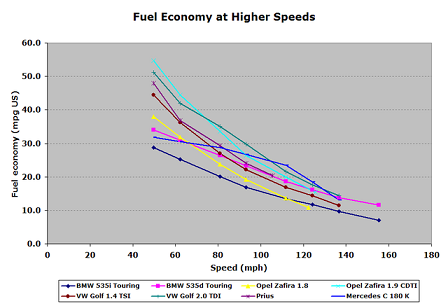photoguy
Thinks s/he gets paid by the post
- Joined
- Jun 15, 2010
- Messages
- 2,301
Anybody here trying to optimize fuel efficiency on long distance driving trips? I've recently done a few trips with cruise control and got the following approximate MPG on my honda element:
25mpg @70-75mph
30mpg @60-65mph
Although I knew driving faster reduced efficiency, I was surprised at how much a difference it made (~20%). This works out to about $25 per 1000 miles. However to get the better efficiency I have to put up with my wife saying I drive like an old man.
Interestingly the following site suggests that the decrease in fuel efficiency is not monotonic at highway speeds for all cars. E.g. the civic has lower efficiency at 60mph than at 70mph.
Fuel Efficiency & Speeding: The True Cost | Automatic Blog
25mpg @70-75mph
30mpg @60-65mph
Although I knew driving faster reduced efficiency, I was surprised at how much a difference it made (~20%). This works out to about $25 per 1000 miles. However to get the better efficiency I have to put up with my wife saying I drive like an old man.
Interestingly the following site suggests that the decrease in fuel efficiency is not monotonic at highway speeds for all cars. E.g. the civic has lower efficiency at 60mph than at 70mph.
Fuel Efficiency & Speeding: The True Cost | Automatic Blog

